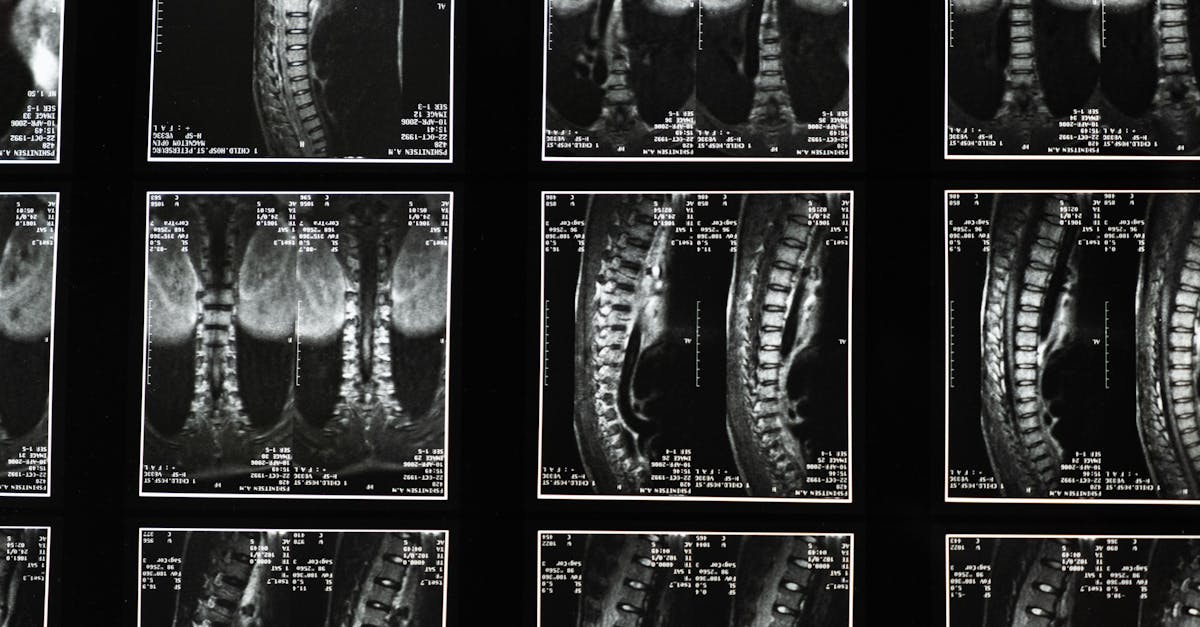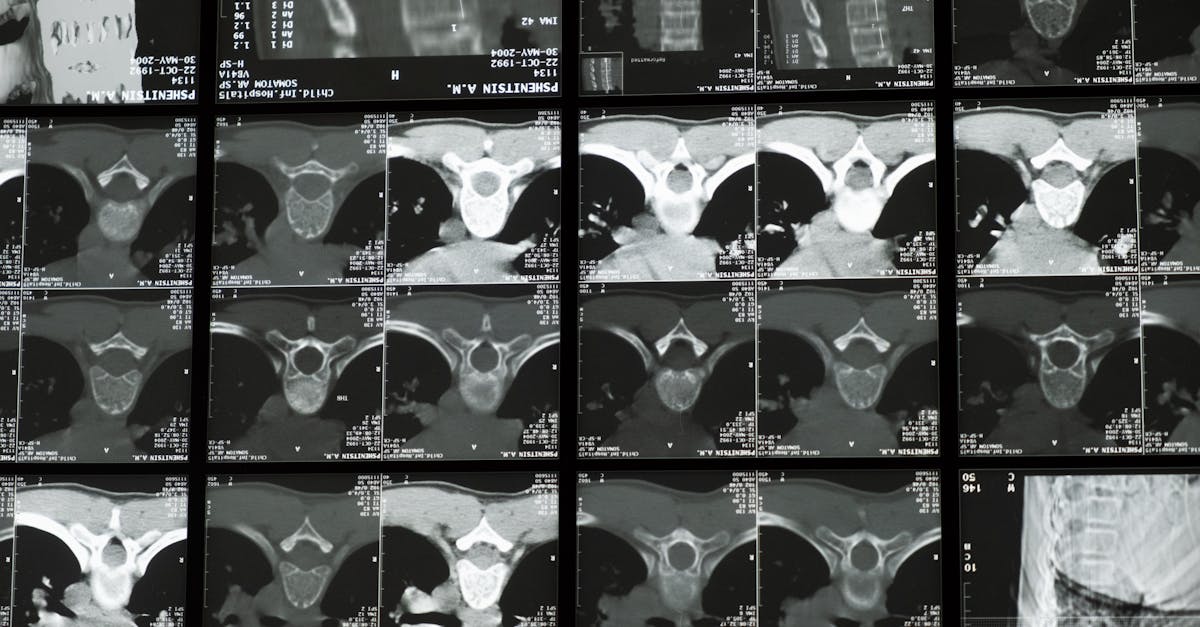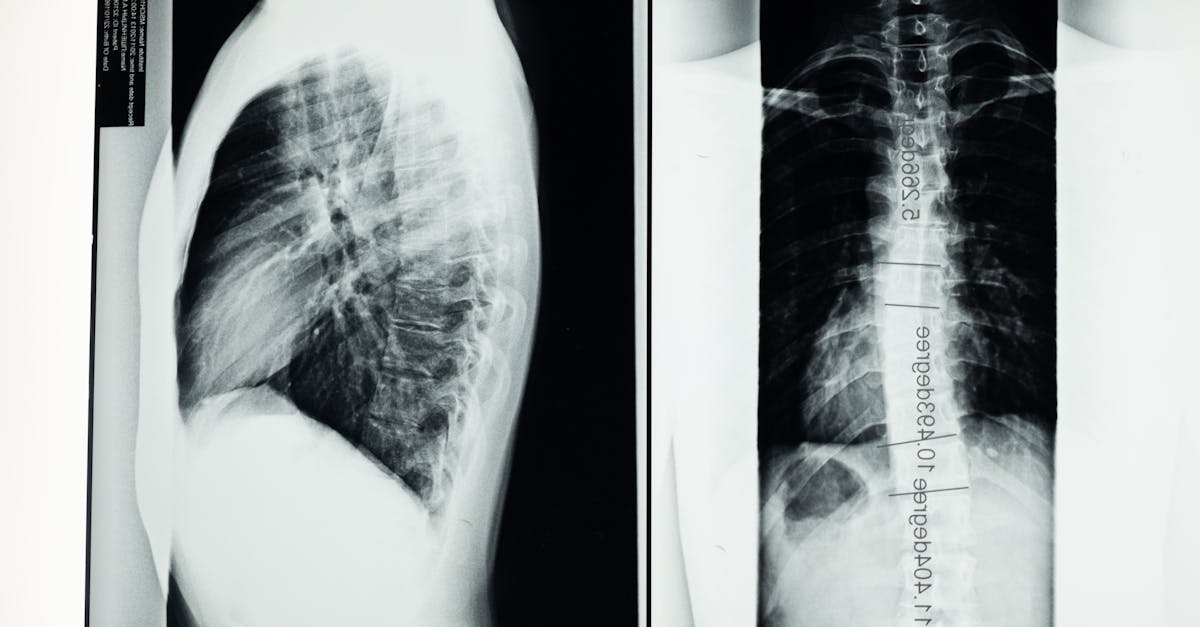Struggling with scoliosis and bad posture? Discover effective strategies for relief.
In Short: Navigating daily life with scoliosis can lead to discomfort and poor posture. Embrace the benefits of targeted posture correction techniques at Pulse Align. By improving your posture, you can alleviate pain and enhance overall well-being. Our approach combines posture exercises, core strengthening, and mindful movement practices to help you move with more ease and confidence. Don’t let scoliosis hold you back. Reclaim your health and wellness at Pulse Align Clinics. Book your appointment today!
Are you struggling with lower back pain and poor posture?
Navigating daily life with scoliosis can be a challenge, but Pulse Align’s essential tips for gentle posture support offer practical solutions to improve posture and alleviate discomfort. With targeted techniques such as posture exercises, yoga for posture, and core strengthening practices, individuals can effectively address issues like forward head posture, rounded shoulders, and even kyphosis. Discover how incorporating these strategies can reduce lower back pain, enhance overall well-being, and promote a sustainable approach to posture correction in your daily routine.

Enhancing Well-Being Through Posture Improvement: Pulse Align’s Gentle Approach
Improving your posture is essential for overall well-being and functional balance. A well-aligned body not only enhances your physical appearance but also plays a crucial role in your daily comfort and health. At Pulse Align, we specialize in neuromuscular recalibration, a gentle technique designed to help you achieve optimal body function naturally. By focusing on posture improvement, we empower clients to live life to the fullest without discomfort.
The Pulse Align Approach
At Pulse Align, we understand the importance of muscle tone and its relation to a balanced body. Our method uses gentle stimulation to promote muscle tone symmetry, fostering a natural return to balance. This holistic approach encourages the body’s innate capabilities, allowing it to address imbalances and discomfort that may affect your daily life. Our focus is on supporting your journey toward improved well-being without directly targeting specific symptoms or conditions.
Benefits of a Holistic Approach
Choosing a holistic method can provide numerous advantages. At Pulse Align, we focus on establishing a supportive environment to enhance your body’s natural healing processes. Feedback from clients has shown that this approach not only aids in posture correction but also fosters relaxation and balance throughout daily activities. Many have reported feeling more aligned and energized, enjoying daily tasks with renewed enthusiasm. Clients appreciate how our techniques contribute to their overall sense of well-being and daily functionality.
Testimonials and Experiences
“Since starting at Pulse Align, I have noticed a remarkable difference in how I feel throughout the day. My posture has improved naturally, and I can engage more freely in activities with less tension,” shares one of our satisfied clients. Testimonials like this highlight the potential for natural benefits that arise from our gentle neuromuscular recalibration services, enhancing posture and reducing discomfort without direct medical claims.
Book Your Consultation Today!
If you’re ready to embrace a journey towards improved well-being and posture, visiting Pulse Align is a great step forward. We invite you to book a consultation at one of our many locations, including Montreal, La Prairie, Terrebonne, Chicoutimi, Charlesbourg, Saint-Jérôme, Châteauguay, Sainte-Marie, Les Escoumins, Granby, and Panama City. Our family-friendly environment ensures that our services are suitable for everyone, from children to pregnant women. Remember, Pulse Align complements the efforts of your healthcare team, supporting your path to wellness.
Explore how we can facilitate a return to optimal function and enhance your overall quality of life. Learn more about our services and locations today!
Medical Disclaimer
The information and advice provided on this site do not replace the advice, diagnosis, or treatment of a healthcare professional. Pulse Align complements but does not replace medical care. Consult with your healthcare team for any medical conditions.
- Maintain Good Posture: Practice proper alignment while sitting and standing.
- Engage in Targeted Stretches: Incorporate gentle stretching into your daily routine.
- Strengthen Core Muscles: Focus on exercises that build core stability.
- Use Ergonomic Furniture: Invest in chairs that provide adequate lumbar support.
- Incorporate Mindful Movement: Utilize techniques such as yoga to enhance body awareness.
- Stay Active: Engage in low-impact exercises to promote mobility.
- Monitor Your Body Mechanics: Be aware of body positioning during daily activities.
- Limit Heavy Lifting: Use proper techniques and tools when moving objects.
- Hydrate and Nourish: Consume a balanced diet to support overall health.
- Seek Professional Guidance: Consult a specialist for personalized advice and support.

Living with scoliosis requires careful attention to posture and daily habits that can significantly impact overall well-being. At Pulse Align, we focus on posture improvement through a gentle, holistic approach. This article outlines essential tips that can help you navigate daily life more comfortably, emphasizing strategies like stretching exercises, core strengthening, and mindful techniques to support your posture and create a balanced, pain-free life.
Understanding Scoliosis and Its Challenges
Scoliosis is a condition characterized by an abnormal curvature of the spine, which can lead to complications such as bad posture and discomfort. It can affect mobility and stability, making it crucial to address symmetry in daily activities. People with scoliosis often struggle with forward head posture, rounded shoulders, and issues related to lordosis and kyphosis. Understanding these challenges can lead to effective coping strategies.
Daily Posture Exercises for Scoliosis Management
Incorporating specific posture exercises into your routine can enhance spinal alignment and reduce pain. Here are some recommended exercises:
- Cat-Cow Stretch: This dynamic stretch improves spinal flexibility and posture.
- Bridging: Focus on core strengthening to support back health.
- Side Planks: Great for enhancing lateral stability and balance.
Mindful Movement Practices
Integrating practices such as yoga and the Feldenkrais Method can promote mindful movement, allowing you to connect your body and mind. Try the following:
- Yoga for Posture: Attend gentle yoga classes focusing on alignment and balance.
- ALEXANDER Technique: This method helps you become aware of your movement patterns for better ergonomics.
Ergonomic Adjustments for Daily Comfort
Adopting an ergonomic workspace can significantly alleviate discomfort associated with scoliosis. Consider these adjustments:
- Utilize a Standing Desk: This helps maintain better posture throughout the day.
- Proper Sitting Posture: Use chairs that offer lumbar support and encourage extended spinal alignment.
Importance of Stretching Exercises
Daily stretching is vital for individuals with scoliosis. It can help relieve tension and improve flexibility. Integrate stretching exercises focusing on your back, hips, and shoulders into your morning routine. Aim for at least 10 minutes a day to enhance your posture.
Call to Action: Discover Personalized Support
At Pulse Align, we are committed to helping you reclaim your health through personalized strategies tailored to your unique needs. Schedule a consultation today to learn more about our specialized plans that include shockwave therapy and other innovative approaches. Let’s work together to optimize your daily life with effective posture support and achieve a more balanced existence.
| Key Focus | Guidance |
|---|---|
| Posture Awareness | Develop regular self-checks for your posture throughout the day to promote better alignment. |
| Targeted Stretching | Incorporate gentle stretching routines in the morning and evening to enhance flexibility and ease. |
| Core Strengthening | Engage in activities that support core stability, offering a balanced foundation for your spine. |
| Mindfulness Practices | Integrate mindfulness techniques to reduce stress and promote a greater sense of calm in daily activities. |
| Ergonomic Support | Utilize ergonomic furniture and tools to maintain proper posture and support natural alignment. |
| Movement Variety | Engage in a variety of physical activities to support joint mobility and overall balance. |
| Hydration and Nutrition | Maintain proper hydration and a balanced diet to promote overall wellness and bodily function. |
| Regular Movement Breaks | Take scheduled breaks to move and stretch, preventing stiffness and promoting blood circulation. |
| Community Support | Engage with support groups or communities for shared experiences and encouragement. |
| Gentle Yoga Practices | Participate in yoga sessions focused on gentle postures, enhancing flexibility and body awareness. |
Client Testimonials: Embracing Wellness with Pulse Align
“As someone living with scoliosis in Châteauguay, I’ve struggled with discomfort for years. After starting my journey with Pulse Align, I’ve noticed significant changes. Their gentle approach combined with targeted support has helped my body naturally recalibrate. It’s empowering to feel that I can reclaim my comfort and mobility.” – Sarah D.
“In Mont-Royal, I sought a solution for consistent back pain due to scoliosis. Pulse Align’s unique techniques align perfectly with my wellness goals. I’ve experienced not only a reduction in pain but also an overall sense of balance and well-being. I encourage others in the area to explore their services!” – Michael T.
“Living in Sainte-Marie has its challenges, especially with scoliosis. However, discovering Pulse Align has been a game changer. Their holistic approach supports my body’s natural healing, and I’ve felt numerous improvements without invasive treatments. I can’t recommend them enough!” – Clara L.
“I found Pulse Align while searching for solutions for my scoliosis struggles in Deux-Montagnes. The personalized care I received made all the difference. Their gentle posture support has allowed my body to regain balance and strength, which I had thought lost forever!” – David M.
“After months of searching for effective management of my scoliosis in Terrebonne, I finally chose Pulse Align. The results have been incredible. I now feel more aligned than ever, and my daily life has improved dramatically. Their method respects my body’s needs and encourages a natural recovery.” – Emma G.
Clients throughout regions like Les Escoumins and Chicoutimi have shared similar experiences, affirming that Pulse Align’s gentle support fosters a renewed sense of well-being. If you’re seeking balance and improvement in your daily life, consider connecting with Pulse Align, as they actively work alongside healthcare teams to enhance your wellness journey.
For more information on how to start your path to recovery, visit Our Clinics and see how we can support you.
Pulse Align clinics are dedicated to improving patients’ quality of life through innovative, integrative healthcare solutions. By combining cutting-edge technologies with personalized therapies, these clinics focus on addressing the root causes of various musculoskeletal issues, chronic pain, and other health concerns. Patients can expect a welcoming environment, competent guidance, and a comprehensive plan tailored to their unique needs, all designed to foster long-term well-being and a more active lifestyle.
Our Mission
At Pulse Align, our mission is to deliver evidence-based, client-centered treatments that address the underlying causes of pain and dysfunction. By integrating advanced techniques and technologies, we strive to empower each person to take control of their health, ensuring a high standard of care, lasting relief, and an improved quality of life.
Living with scoliosis can be a daily challenge, but incorporating the right self-care habits into your routine can make a significant difference in managing your condition and improving your overall well-being. Here are 10 daily habits that can help you enhance your posture and spinal alignment: Start your day with targeted stretches.
Understanding the strategies for achieving a stable posture is crucial for individuals with scoliosis. Essential tactics include performing targeted exercises that emphasize spinal alignment, as well as implementing practices that enhance core strength. By incorporating physiotherapeutic methods, individuals can discover effective ways to improve their comfort and mobility.
Scoliosis is a condition that can lead to bad posture, affecting your everyday life and causing discomfort. At Pulse Align, we focus on posture correction through gentle approaches, combining posture exercises, yoga for posture, and core strengthening techniques that can significantly improve posture and overall stability.
Dealing with daily life when you have spinal curvature may require changes in your lifestyle and a good support system. Self-care strategies, such as physical activity, good nutrition, and a focus on mental health, are essential for a good quality of life. It is also important to clear up myths about scoliosis. Many patients can live normal and fulfilling lives.
By implementing daily management and support strategies, individuals with scoliosis can live a pain-free life. Exercise, good posture, pain management, supportive clothing, and a healthy diet are all important aspects for those navigating life with scoliosis. These practices can significantly enhance your daily comfort and mobility.
Learn more about his approach and available services at www.pulsealign.com and find a location near you here: https://pulsealign.com/our-locations/.
TAGMED’s Advanced Spinal Decompression Therapy: A Non-Surgical Solution for Chronic Pain Relief
TAGMED offers a state-of-the-art Spinal Decompression Therapy specifically designed for individuals suffering from chronic pain related to conditions such as herniated discs, bulging discs, and various forms of spinal stenosis. This non-surgical approach targets moderate-to-severe disc issues by gently reducing pressure on the affected discs and nerves, thereby enhancing mobility, alleviating pain, and supporting your body’s natural healing processes. If traditional methods have left you feeling stuck, TAGMED’s evidence-based decompression therapy could be your path back to an active and comfortable life.
Have you tried conventional treatments and still struggle with persistent back pain due to a severe disc condition?
Mechanism of Action
TAGMED’s neurovertebral decompression applies a controlled and progressive traction force to the spine. This innovative method works by increasing the space between vertebrae, significantly reducing pressure on intervertebral discs and nerve roots. By creating additional space, this therapy enhances fluid circulation in the targeted areas, which helps in reducing inflammation and relieving pain. For individuals suffering from chronic back pain or sciatica, neurovertebral decompression presents a reliable, non-invasive solution for alleviating persistent discomfort.
Specific Benefits
This non-invasive approach effectively addresses chronic pain associated with conditions like degenerative disc disease or foraminal stenosis. By alleviating pressure on fragile nerve structures and optimizing fluid circulation around the discs, TAGMED’s therapy can accelerate recovery and improve overall well-being. Many individuals report significant decreases in pain levels and improved quality of life, making TAGMED’s decompression therapy a compelling option for those previously dependent on medication or surgery.
Comparison with Other Treatments
When compared to other treatments—such as pain medications, corticosteroid injections, or surgical interventions—TAGMED’s neurovertebral decompression stands out for its non-invasive approach. Unlike traditional treatments, this therapy minimizes the risks associated with medications and avoids the need for surgical procedures. Patients often find that they can experience faster paths to recovery and a better overall experience in managing their chronic pain.
Case Studies or Testimonials
Numerous patients have discovered lasting relief through TAGMED’s neurovertebral decompression therapy. Testimonials highlight significant improvements, including decreased pain levels, a quicker return to daily activities, and reduced reliance on pharmaceutical interventions. These real-world accounts serve to illustrate the tangible benefits and practical advantages of this advanced therapeutic approach.
Conclusion: Navigate Life with Confidence through Pulse Align
If you’re looking to enhance your quality of life while managing scoliosis, Pulse Align offers an essential framework for gentle posture support. By focusing on posture correction through compassionate guidance, you can experience significant improvements in your posture, reduced discomfort, increased mobility, and enhanced overall well-being.
Many clients have shared their positive experiences with Pulse Align, reflecting on the gentle, non-invasive methods that allow them to feel supported in their journey toward a more balanced existence. By embracing this holistic approach, you can trust that your body’s natural capacity for healing is being nurtured.
Take the next step in reclaiming your wellness. Discover the Pulse Align difference today by visiting our website or schedule your consultation now. With the support of our dedicated team, you can embark on a path filled with hope and renewed strength for a healthier, more vibrant life.
Do you suffer from a condition that responds little or not at all to conservative treatments?
Pulse Align offers a unique, innovative approach to wellness designed to help restore the body’s natural balance and posture through gentle, imperceptible pulses. This method is aimed at addressing discomfort and tension while promoting overall well-being and functional balance. By focusing on the body’s natural recalibration processes, clients often report improved posture and a reduction in tension, creating a more comfortable experience in daily life.
Rather than targeting discomfort directly, Pulse Align emphasizes the body’s ability to recalibrate itself naturally. Many clients experience amazing improvements that enhance comfort and contribute to improved posture. By fostering this natural balance within the body, our gentle, non-invasive approach encourages an atmosphere where clients can thrive and engage in life with renewed energy and ease.
At Pulse Align, we pride ourselves on delivering a personalized approach tailored to each client’s unique journey. Feedback from clients highlights notable improvements, such as reduced tension in the neck and back areas, a more relaxed demeanor, and an overall sense of wellness. Our commitment to inclusivity ensures that our services cater to families, including children and pregnant women, making our approach accessible to all who seek to enhance their well-being.
We invite you to learn more about how Pulse Align can support your wellness journey by visiting our website. There, you can find nearby locations, including La Prairie, Mont-Royal, and Terrebonne, and easily book a consultation for yourself or a family member. Remember, Pulse Align works alongside your healthcare services, supporting your overall wellness naturally. To explore our services and book an appointment, visit us at Pulse Align.
Our cutting-edge technology allows us to quickly regain symmetry of normal muscle tone, ultimately reducing tension throughout the body. Clients appreciate our painless, sophisticated, and personalized service, which is safe for all ages. Each service is crafted to address the specific needs of individuals, promoting harmony and wellness in their daily lives.
With Pulse Align, you’re embarking on a holistic approach to support neuromuscular health, symmetry, and nervous system recalibration. Embrace the opportunity to reconnect with your body and enhance your quality of life. Schedule your consultation today!
Frequently Asked Questions
Posture Imbalance, body misalignment
- Which exercises help improve body alignment?Core strengthening, planks, yoga, Pilates, and postural stretches are particularly beneficial.
- Can poor posture cause jaw pain?Yes, improper head and neck alignment may create tension in the jaw, leading to pain or TMJ issues.
- What is postural imbalance?Postural imbalance is an alteration in the body’s natural alignment, which may cause uneven weight distribution, muscle tension, and pain.
- Does footwear choice affect posture?Absolutely, inappropriate shoes can alter foot biomechanics, affecting overall posture and body alignment.
- Can wearing orthotics help correct postural imbalance?Yes, in some cases, orthopedic insoles or braces can help balance the body and reduce compensatory posture patterns.
- Are back strengthening exercises alone enough?No, it’s important to also strengthen the abdominals, hips, shoulders, and legs to maintain overall muscle balance.
- Is strengthening the deep muscles crucial?Yes, deep stabilizing muscles of the spine are vital for lasting alignment and a healthy posture.
- Do relaxation techniques help correct posture?Yes, techniques like meditation or yoga relax muscles, reduce stress, and encourage better body awareness.
- Does being overweight affect posture?Yes, excess weight, especially around the abdomen, can shift the body’s center of gravity and increase joint strain.
- Are proprioception exercises useful?Yes, they help improve body awareness, balance, and coordination, which promote better posture.
Adam Blanc understands that shoulder pain can do more than slow you down—it can impact your entire quality of life. As a Shoulder Pain Awareness Advocate at Pulse Align, he’s dedicated to showing readers that genuine relief is not just possible, but within reach. Drawing on the latest research, Adam combines expert insights with compassionate guidance, inspiring people to move toward greater comfort and mobility. His approach is about more than just managing symptoms; it’s about empowering individuals to rediscover their strength and embrace every moment, free from the constraints of pain.
Medical Disclaimer
The information and advice provided on this site do not replace the advice, diagnosis, or treatment of a healthcare professional. Please note that the author of this article is neither a doctor nor a specialist in a medical specialty as defined by the Collège des médecins du Québec. Manual medicine, functional medicine, and sports medicine as described on this site exclude any medical treatment or diagnosis made by a doctor or medical specialist. Always consult your doctor for any medical questions. For more details, please read our complete Legal Notice.
References
- Pillastrini, P., Rocchi, G., Deserri, D., Foschi, P., Mardegan, M., Naldi, M. T., Villafañe, J. H., & Bertozzi, L. (2016). Effectiveness of neuromuscular taping on painful hemiplegic shoulder: a randomised clinical trial. Disability and Rehabilitation, 38(16), 1603–1609. https://doi.org/10.3109/09638288.2015.1107631
- Patsaki, I., Gerovasili, V., Sidiras, G., Karatzanos, E., Mitsiou, G., Papadopoulos, E., Christakou, A., Routsi, C., Kotanidou, A., & Nanas, S. (2017). Effect of neuromuscular stimulation and individualized rehabilitation on muscle strength in intensive care unit survivors: a randomized trial. Journal of Critical Care, 40, 76–82. https://www.sciencedirect.com/science/article/pii/S0883944116304002
- Moroder, P., Karpinski, K., Akgün, D., Danzinger, V., Gerhardt, C., Patzer, T., Tauber, M., Wellmann, M., Scheibel, M., & Boileau, P. (2024). Neuromuscular Electrical Stimulation–Enhanced Physical Therapist Intervention for Functional Posterior Shoulder Instability (Type B1): A Multicenter Randomized Controlled Trial. Physical Therapy, 104(1), pzad145. https://academic.oup.com/ptj/article-abstract/104/1/pzad145/7327094
- Lin, P., Yang, M., Huang, D., Lin, H., Wang, J., Zhong, C., & Guan, L. (2022). Effect of proprioceptive neuromuscular facilitation technique on the treatment of frozen shoulder: a pilot randomized controlled trial. BMC Musculoskeletal Disorders, 23(1), 367. https://doi.org/10.1186/s12891-022-05327-4
- Seitz, A. L., Podlecki, L. A., Melton, E. R., & Uhl, T. L. (2019). Neuromuscular adaptions following a daily strengthening exercise in individuals with rotator cuff related shoulder pain: a pilot case-control study. International Journal of Sports Physical Therapy, 14(1), 74. https://www.ncbi.nlm.nih.gov/pmc/articles/PMC6350670/
- İğrek, S., & Çolak, T. K. (2022). Comparison of the effectiveness of proprioceptive neuromuscular facilitation exercises and shoulder mobilization patients with Subacromial Impingement Syndrome: A randomized clinical trial. Journal of Bodywork and Movement Therapies, 30, 42–52. https://www.sciencedirect.com/science/article/pii/S1360859221002564
- Hagberg, M., Harms-Ringdahl, K., Nisell, R., & Hjelm, E. W. (2000). Rehabilitation of neck-shoulder pain in women industrial workers: a randomized trial comparing isometric shoulder endurance training with isometric shoulder strength training. Archives of Physical Medicine and Rehabilitation, 81(8), 1051–1058. https://www.sciencedirect.com/science/article/pii/S000399930090409X
- Kim, M.-S., Kim, S. H., Noh, S.-E., Bang, H. J., & Lee, K.-M. (2019). Robotic-assisted shoulder rehabilitation therapy effectively improved poststroke hemiplegic shoulder pain: a randomized controlled trial. Archives of Physical Medicine and Rehabilitation, 100(6), 1015–1022. https://www.sciencedirect.com/science/article/pii/S0003999319301601
- Lee, J.-H., Chun, Y.-M., Kim, D.-S., Lee, D.-H., & Shin, S.-J. (2022). Effects of neuromuscular electrical muscle stimulation on the deltoid for shoulder function restoration after reverse total shoulder arthroplasty in the early recovery period: a prospective randomized study. Archives of Orthopaedic and Trauma Surgery, 143(6), 3037–3046. https://doi.org/10.1007/s00402-022-04515-0
- Xu, Z.-H., An, N., & Wang, Z.-R. (2022). Exercise-induced hypoalgesia following proprioceptive neuromuscular facilitation and resistance training among individuals with shoulder myofascial pain: Randomized controlled trial. JMIRx Med, 3(4), e40747. https://xmed.jmir.org/2022/4/e40747/




